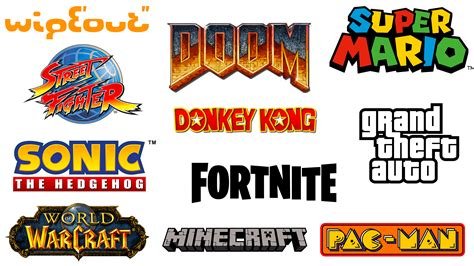- Release Year: 2004
- Platforms: Windows
- Publisher: PAN Vision AB
- Genre: Compilation

Description
Backpacker 3: Bonus Pack – Mediterranean Edition is a compilation that combines the base game ‘Backpacker 3’ with its expansion ‘Backpacker 3: Mediterraneo’, offering an enhanced travel simulation experience set in the Mediterranean region. Released in 2004 for Windows, this edition allows players to explore various destinations and engage in travel-related activities.
Backpacker 3: Bonus Pack – Mediterranean Edition: A Comprehensive Retrospective
Introduction
Backpacker 3: Bonus Pack – Mediterranean Edition (2004) is a compilation that encapsulates the essence of early 2000s travel simulation games, blending adventure, strategy, and cultural exploration into a singular experience. As part of the Backpacker series, this edition stands out by offering an expanded journey through the Mediterranean, a region rich in history and diversity. This review will dissect the game’s development, narrative depth, gameplay mechanics, and its enduring legacy, arguing that while it may not have revolutionized the genre, it remains a noteworthy entry in the travel simulation canon.
Development History & Context
The Studio and Its Vision
Published by PAN Vision AB, Backpacker 3: Bonus Pack – Mediterranean Edition was released on October 29, 2004, for Windows. The game builds upon the foundation of Backpacker 3 (2003) and its expansion Mediterraneo (2004), offering players a curated experience of backpacking across iconic Mediterranean destinations. PAN Vision AB, known for its niche simulation titles, aimed to capture the spirit of independent travel, blending education with entertainment.
Technological Constraints and Gaming Landscape
Developed during a transitional period in gaming, Backpacker 3: Mediterranean Edition reflects the technological limitations of early 2000s PC gaming. The game’s 2D isometric perspective and pixelated graphics were typical of the era, though they served the game’s educational and exploratory goals effectively. The gaming landscape in 2004 was dominated by 3D adventures and RPGs, making Backpacker 3 a unique offering that catered to a specific niche—players interested in cultural immersion and strategic travel planning.
Narrative & Thematic Deep Dive
Plot and Characters
The game follows a backpacker navigating through Mediterranean hotspots like Greece, Italy, and Turkey, with the player managing resources, time, and cultural interactions. Unlike traditional adventure games, Backpacker 3 lacks a linear narrative, instead focusing on emergent storytelling through player choices. The protagonist is a silent avatar, allowing players to project themselves into the experience.
Themes and Dialogue
The game’s central theme is cultural exploration, emphasizing respect for local customs, budget management, and adaptability. Dialogue is minimal but functional, with NPCs providing hints about local attractions, costs, and hidden gems. The absence of deep character arcs is compensated by the richness of the environments and the authenticity of the settings.
Gameplay Mechanics & Systems
Core Gameplay Loop
The core loop revolves around resource management, route planning, and cultural interaction. Players must balance their budget, choose transportation methods, and engage with locals to uncover hidden opportunities. The game’s strategic depth lies in optimizing travel routes while experiencing as much of the region as possible.
Combat and Progression
Unlike traditional adventure games, Backpacker 3 lacks combat, focusing instead on puzzle-solving and social interactions. Progression is tied to completing objectives, such as visiting landmarks or collecting cultural artifacts, which unlock new areas and rewards.
UI and Innovative Systems
The UI is functional but dated, with a top-down map and inventory system that prioritizes clarity over aesthetics. One innovative feature is the “Cultural Meter,” which tracks the player’s understanding of local customs, influencing interactions and rewards.
World-Building, Art & Sound
Setting and Atmosphere
The Mediterranean setting is the game’s strongest asset, with meticulously researched locations that capture the essence of each region. From the ruins of Athens to the canals of Venice, the game excels in world-building through attention to detail.
Visual Direction
The art style is pixelated but charming, with vibrant colors that evoke the warmth of the Mediterranean. While not cutting-edge, the visuals effectively convey the game’s themes of exploration and discovery.
Sound Design
The soundtrack features traditional Mediterranean music, enhancing immersion. Ambient sounds like market chatter and seagulls further enrich the atmosphere, though voice acting is limited to occasional NPC dialogue.
Reception & Legacy
Critical and Commercial Reception
Upon release, Backpacker 3: Mediterranean Edition received mixed reviews. Critics praised its educational value and unique premise but criticized its dated graphics and lack of innovation. Commercially, it catered to a niche audience, appealing primarily to travel enthusiasts and simulation fans.
Influence on Subsequent Games
The game’s legacy lies in its contribution to the travel simulation subgenre, influencing titles like Occultus: Mediterranean Cabal (2016), which expanded on similar themes. Its emphasis on cultural immersion foreshadowed modern games that blend education with entertainment.
Conclusion
Backpacker 3: Bonus Pack – Mediterranean Edition is a niche but valuable entry in the travel simulation genre. While its graphics and mechanics may feel dated, its commitment to cultural exploration and strategic gameplay makes it a worthwhile experience for fans of the genre. Its legacy endures as a testament to the early 2000s’ experimental approach to blending education and entertainment in gaming. Verdict: A hidden gem for travel simulation enthusiasts.